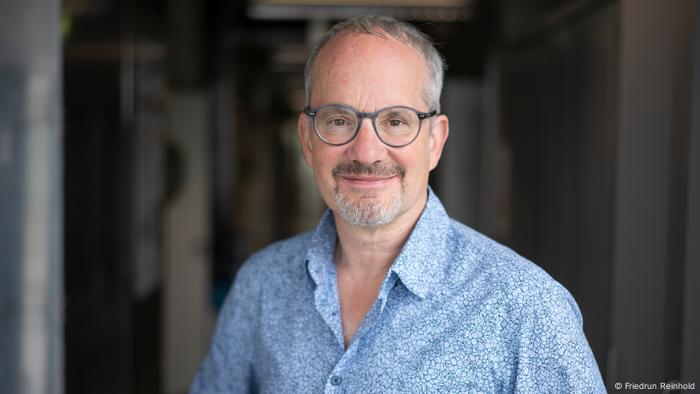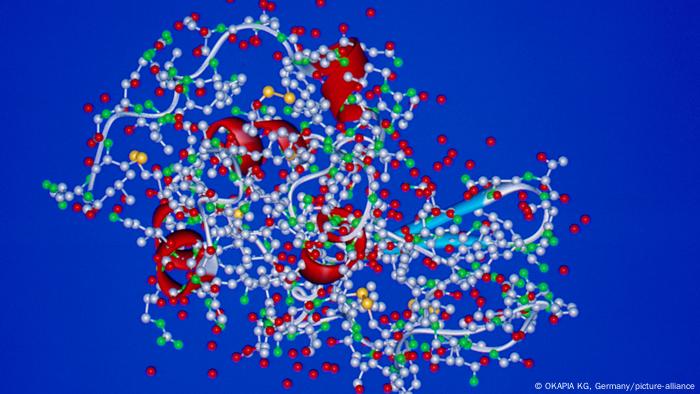The Körber European Science Prize has been awarded to cell biologist Anthony Hyman. Hyman discovered a new state of biological matter that may hold the keys to some of the biggest questions in biology.
You and I might not look twice at nematodes, but for Anthony Hyman, winner of this year's Körber European Science Prize, the obscure worms hold the answers to understanding how our cells work.
"No one really cares about C. Elegans, but our research on them ended up impacting almost all biomedical research," Hyman told DW.
The prize, worth €1 million ($1 million), will be awarded to Hyman on September 2.
Hyman won the prize for his discovery that proteins can accumulate inside the cell as tiny drops in very high concentrations, changing cell activity. The findings were first presented in a 2009 paper in the journal Science.
Normally, proteins are like liquids flowing inside the cell, but during studies on single-cell embryos of C. Elegans, a roundworm often used to study human diseases, Hyman found that proteins can very quickly cluster together in condensates resembling tiny drops.
During the process, called "phase separation," each drop is a frantic hive of chemical reactions. But once those reactions end — often in a matter of seconds — the drop disappears.
"Phase separation is like a flash mob — someone turns on the music and the proteins all come together. Turn the music off and they go away again," he said.
A new way to understand degenerative diseases
It's a difficult and abstract concept to grasp. If phase separation is like a flash mob, what is the music driving the reaction, and who are the dancers?
Hyman explained that the discovery of phase separation applies to almost all aspects of biomolecular events. For one, the research is helping scientists to better understand degenerative diseases like amyotrophic lateral sclerosis (ALS) and Alzheimer's disease.
Experts have known for decades that ALS and Alzheimer's are caused by the buildup of protein aggregates in cells. Hyman said pathologists find "protein aggregates", or stable arrays of non-moving proteins, in the brains of people who have died from these diseases.
In patients with Alzheimer's, for example, condensates of proteins called Tau proteins gather in neurons and become aggregates.
By losing their dynamic properties, they become toxic, causing neurons to die in the brain. Over time, this leads to symptoms like dementia.
In this example, the dancers that Hyman alluded to would be the Tau proteins. They are gathering into aggregates in the cell, but something has gone wrong, causing them to get stuck in that formation. Hyman's discovery tells us how that might happen.
What the music is in this situation is a little less clear. What causes Tau proteins to aggregate in the first place? What causes neurodegenerative diseases? The hope is that Hyman's discovery will help us to eventually know more about the causes of diseases like Alzheimer's — and how to treat them.
Blue-sky science
The impact of Hyman's discovery goes far beyond neurodegenerative disease research. It's now understood that phase separation is a fundamental property of how all cells function.
Hyman explained that the goal of biological sciences is to cure diseases, but to get to that point you need to fund ‘blue sky' science.
He explained that funding obscure research is like planting little acorns — you never know which one will grow into a big oak.
"The only way we can make better healthcare decisions and develop new treatments is by understanding what the exact problems are in disease. If a mechanic doesn't know how a car works, it's almost impossible to fix it. Scientists have a harder job — we're trying to understand a system that we didn't design or build ourselves," he said.
Hyman's research helps us to understand the basis of how cells work — not just the nuts and bolts, but also the physics of how they operate.
"Every cell in your body has about 5 billion proteins in it — almost the number of people on Earth. This is an incredibly complicated system that evolved over 3 billion years. The implications are that we can go out and eat a huge bowl of spaghetti and later cope with the sugar increase. Complex molecular arrangements in cells make that happen, and that's what I plan to use the prize money to find out," Hyman said.
Edited by: Clare Roth


